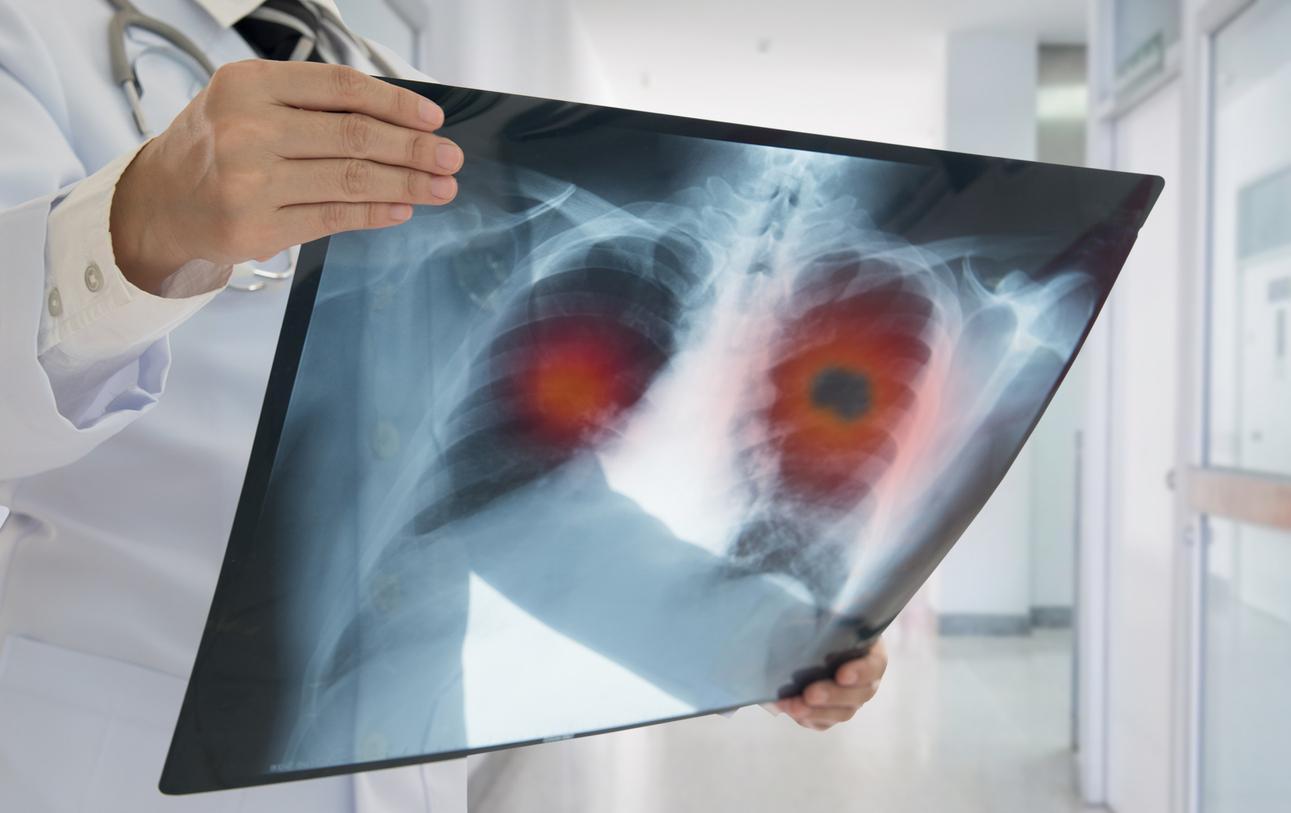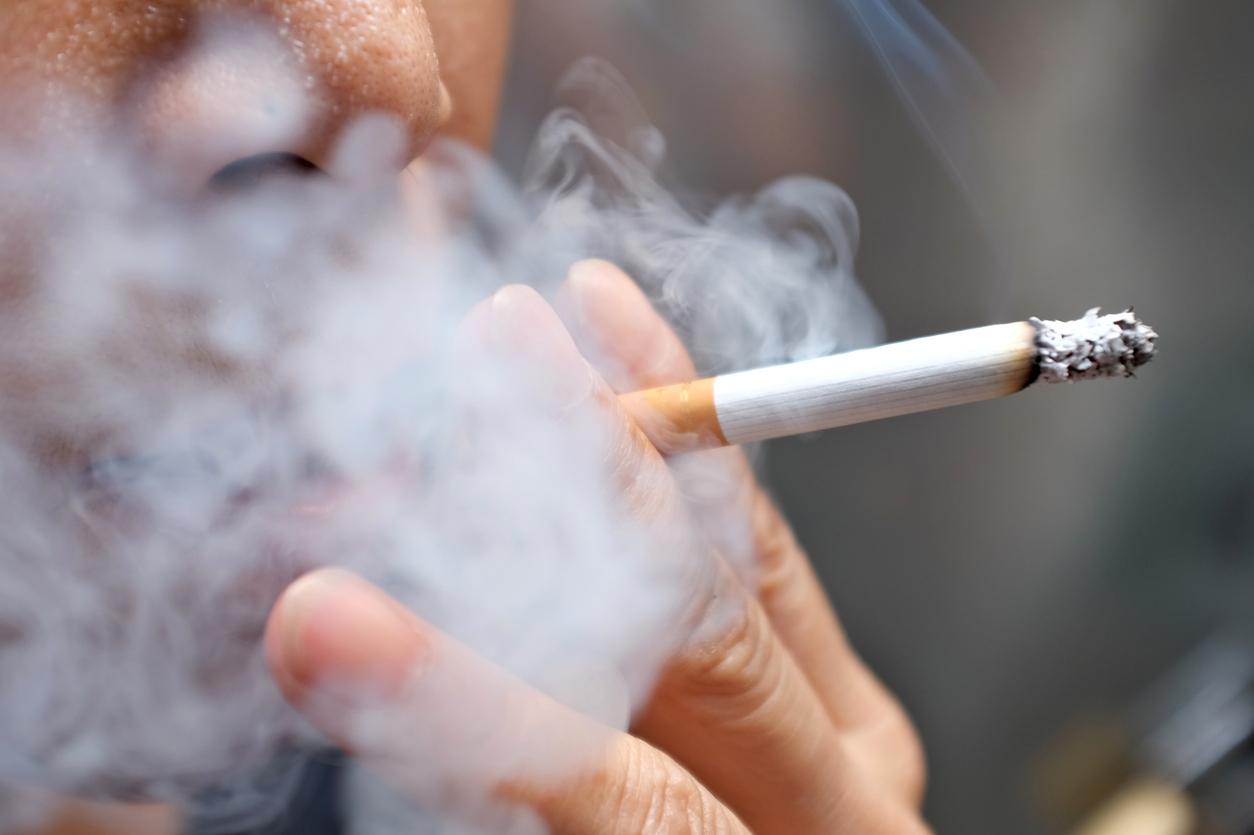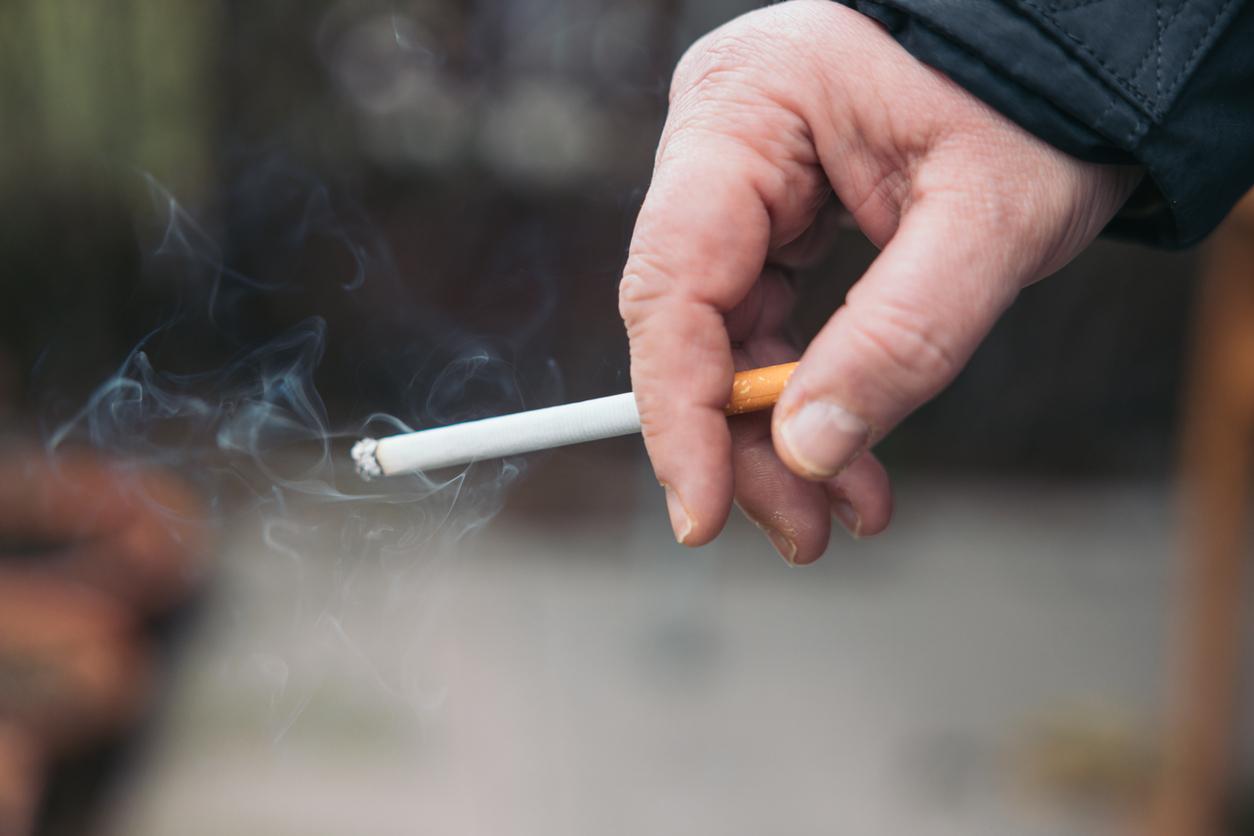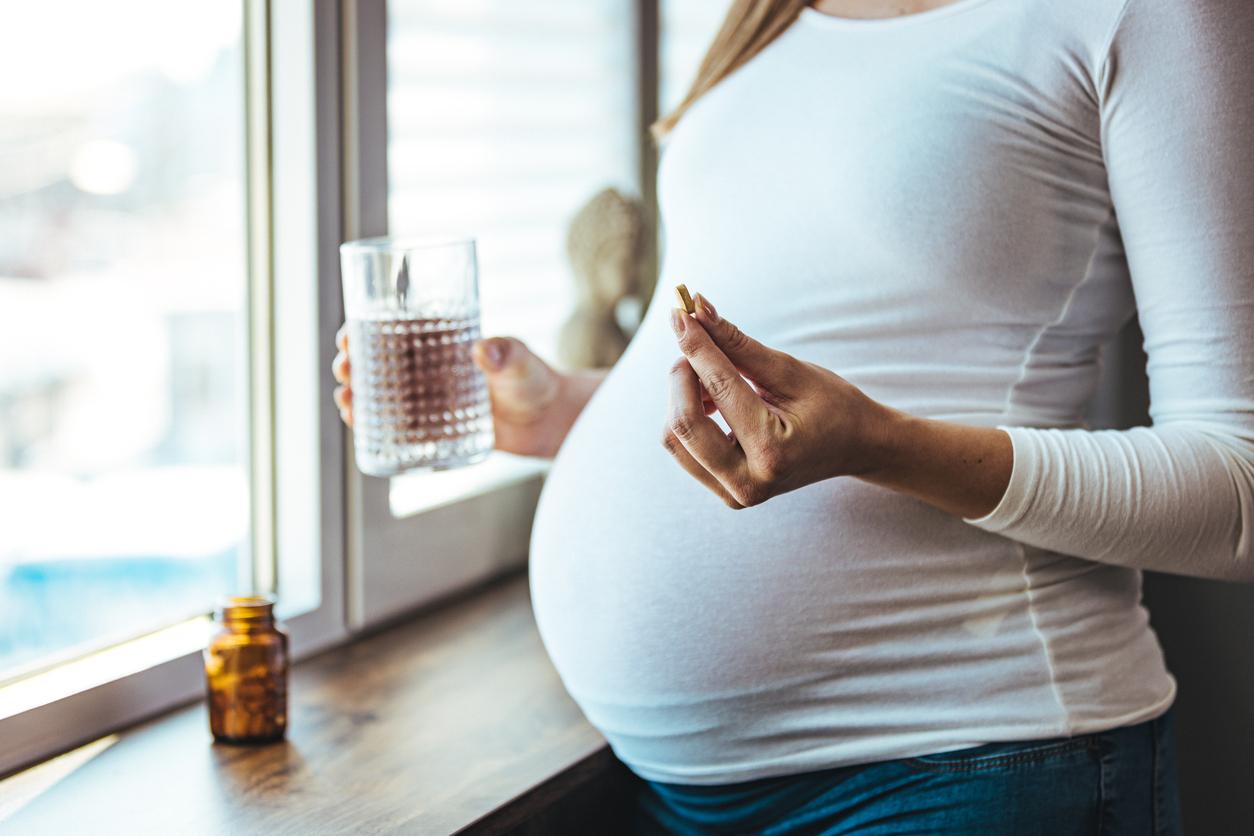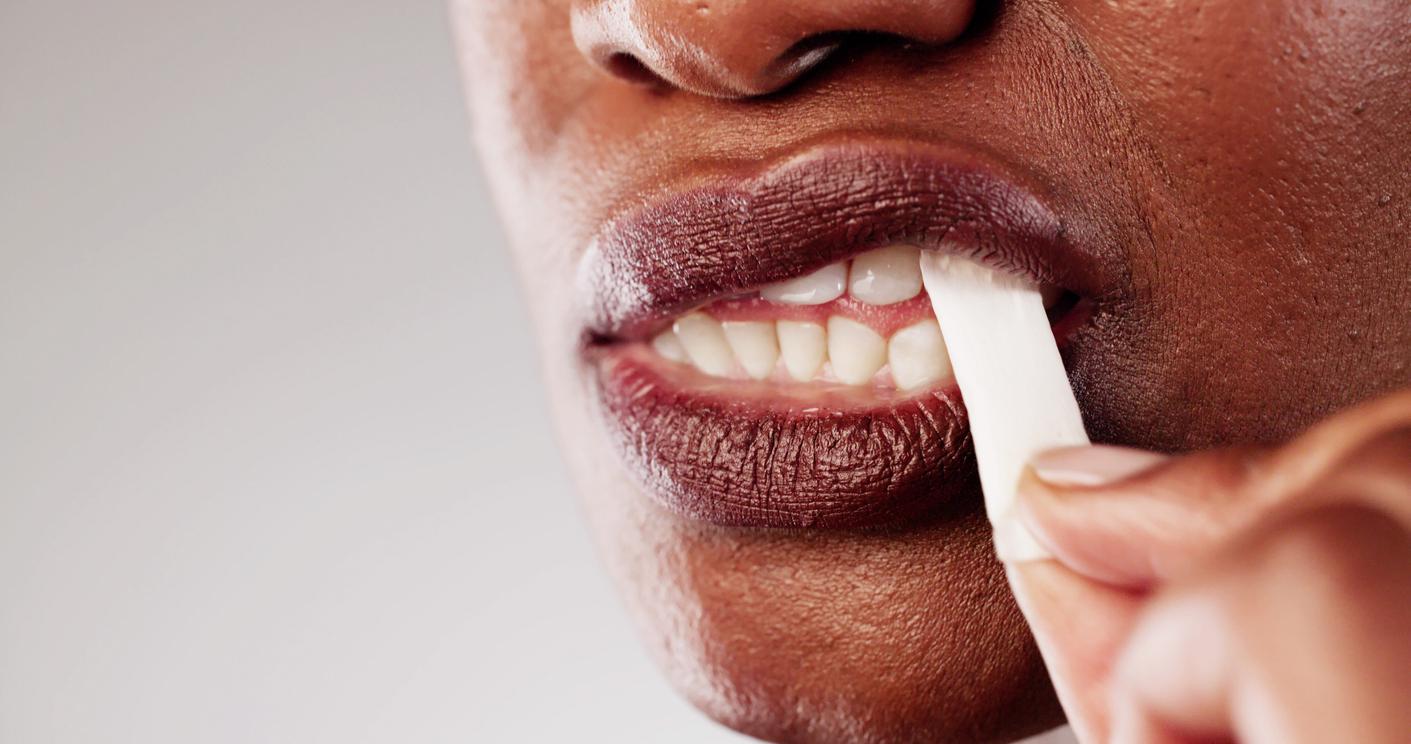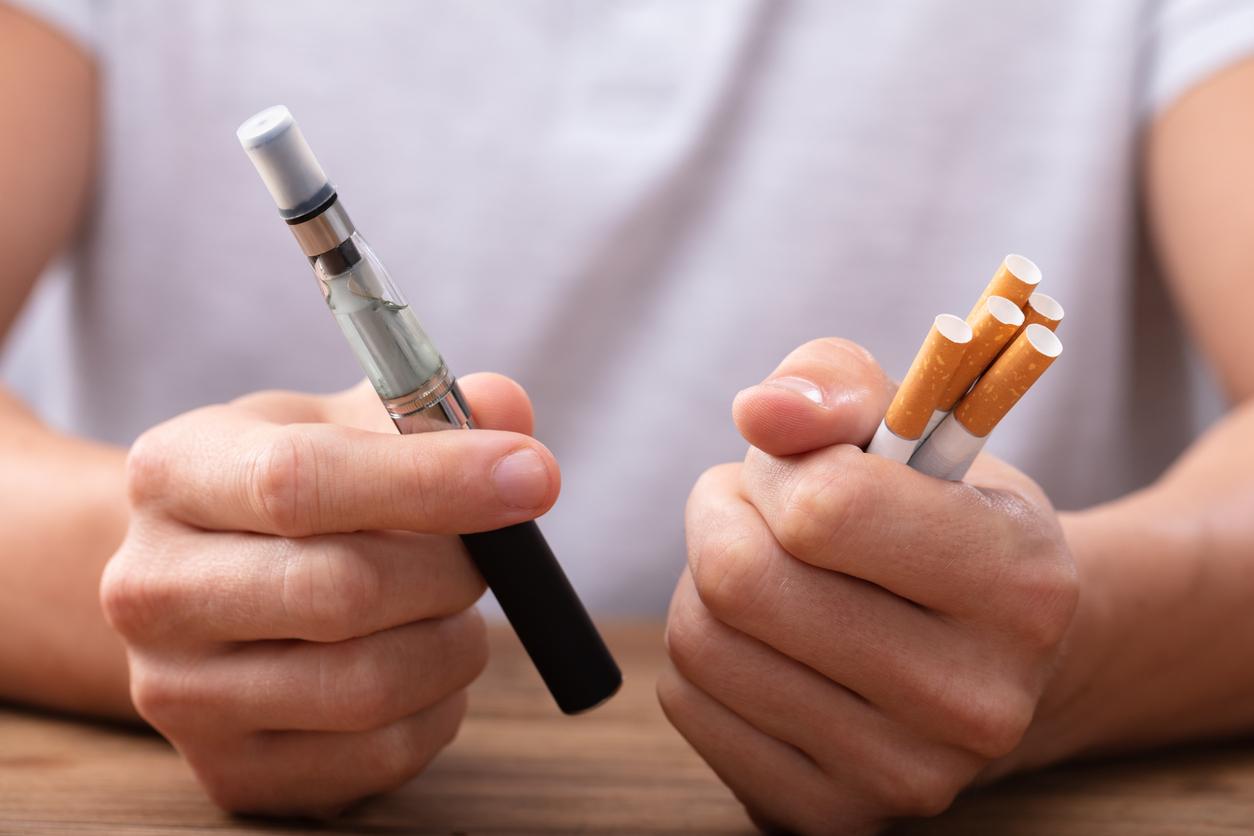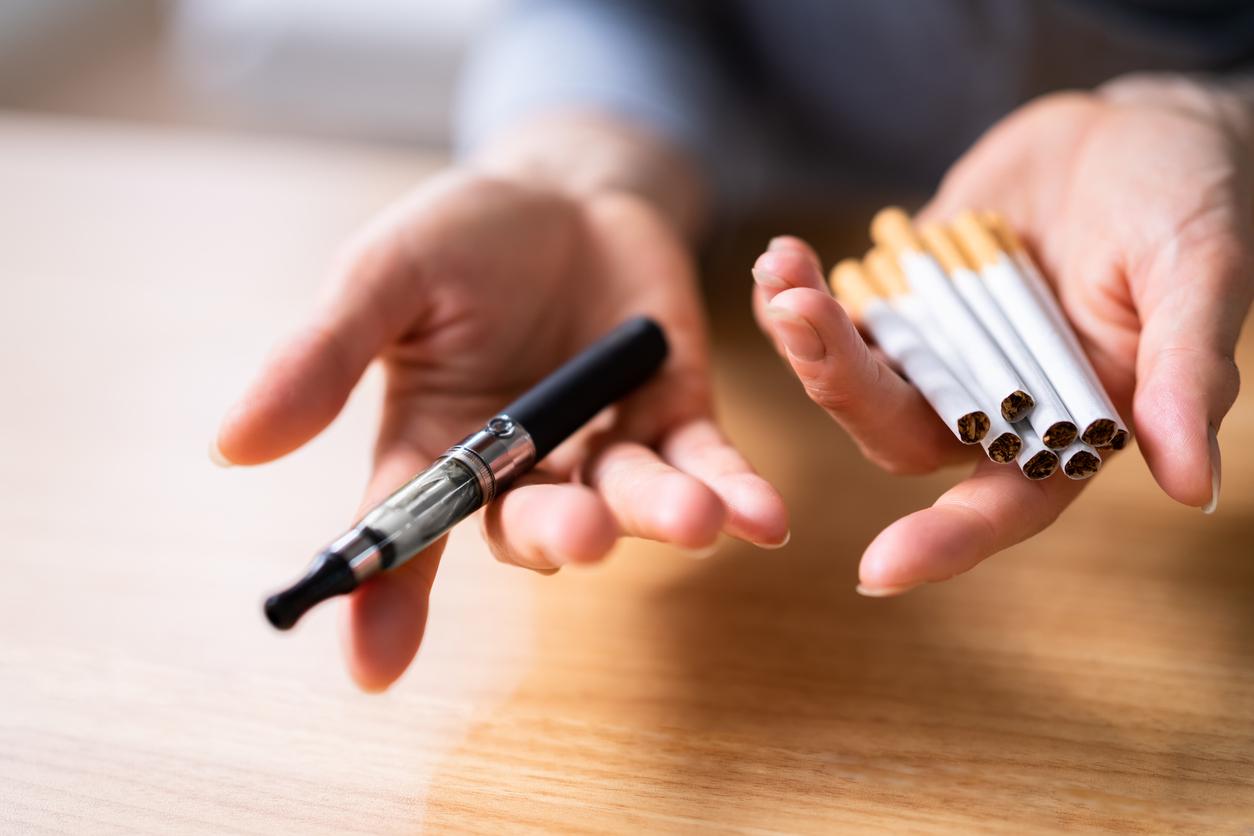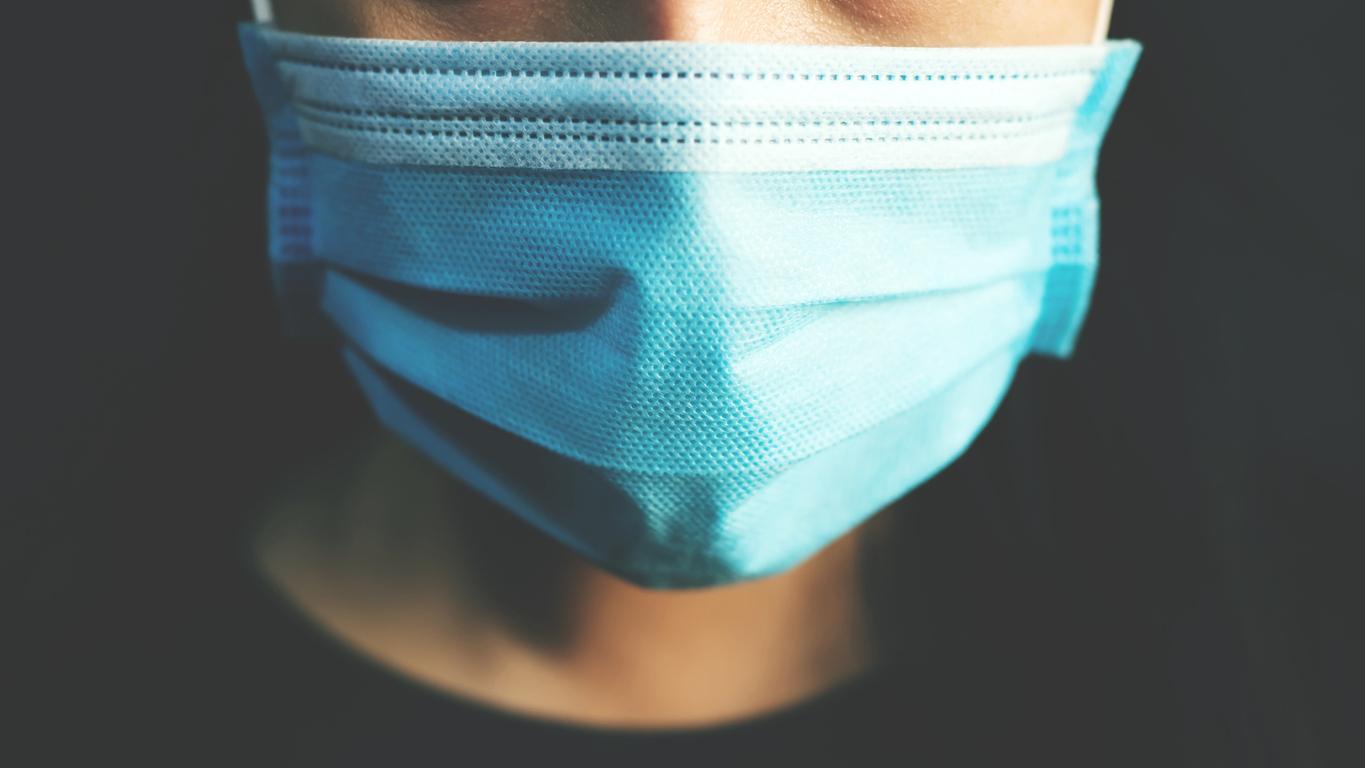In 2020, more than three out of ten adults aged 18-75 said they smoked and a quarter would smoke daily. A prevalence which had been declining until then, but which stabilized with the arrival of the Covid-19 pandemic. According to the Coviprev study, 27% of smokers said they had increased their tobacco consumption at the end of March 2020i.e. one month after the start of confinement.
The pandemic has also brought the wearing of a mask into the daily life of the French. If it is no longer mandatory today, it is the subject of strong recommendations from the government or hospital staff. But according to a new studythe association between mask and tobacco would be harmful to the health of smokers.
Wearing a mask increases exhaled carbon monoxide
Published this July 7, 2022 in theEuropean Journal of Preventive Cardiologythe study shows that smoking traditional or non-combustible cigarettes during the mask-wearing period would lead to double increase in exhaled carbon monoxide and impaired blood vessel function compared to periods without a mask. “The study suggests that smoking any tobacco product has become even more dangerous during the Covid-19 pandemic due to the need to wear a mask for long hours”, said Professor Ignatios Ikonomidis, lead author of the study. “Previous research has shown that impaired vascular function is linked to heart problems and premature death.”he continues.
The study mainly focused on two types of tobacco, traditional so-called combustible cigarettes and non-combustible or “heated tobacco” cigarettes, but did not include e-cigarettes (vaping). Data from 40 smokers of conventional cigarettes, 40 exclusive users of burnt tobacco and 40 non-smokers from the medical staff of the same hospital were analyzed. They were on average 45 years old, and 72% of them were women.
Researchers conducted different assessments on exhaled carbon monoxide after deep breathing and markers of vascular function. Some were carried out early in the morning, after having slept without a mask and after a long period without having smoked, and others compared periods of work of eight hours with or without a mask.
It also impairs the function of blood vessels
In conventional cigarette smokers, exhaled carbon monoxide after deep breathing increased from 8.00 parts per million (ppm) at baseline to 12.15 without a mask and 17.45ppm with mask. In non-smokers, exhaled monoxide did not differ with or without a mask. All vascular markers were also higher in all smokers when they wore a mask.
“Compared to smokers of combustible cigarettes, users of non-combustible cigarettes had lower baseline carbon monoxide levels and smaller increases in vascular damage when wearing a mask. Nonetheless, the results show that smoking any tobacco product while wearing a mask may additionally impair blood vessel function compared to mask-free periods, at least in part due to greater carbon monoxide rebreathing and/or or nicotine-rich vapors“, concludes the researcher. Results which, he hopes, will give the impetus to many smokers to give up this habit.
Sources:
- The effect of smoking on exhaled carbon monoxide and arterial elasticity during prolonged surgical mask use in the COVID-19 era, European Journal of Preventive CardiologyJuly 7, 2022
- CoviPrev: a survey to monitor changes in behavior and mental health during the Covid-19 epidemicPublic Health France
- Tobacco consumption among adults in 2020: results of the Public Health France barometerMay 2021
Read also:
- Smoking would increase the risk of fracture when you are a man
- Quit smoking: methods suitable for everyone
- Electronic cigarettes: solvents can damage the eyes








